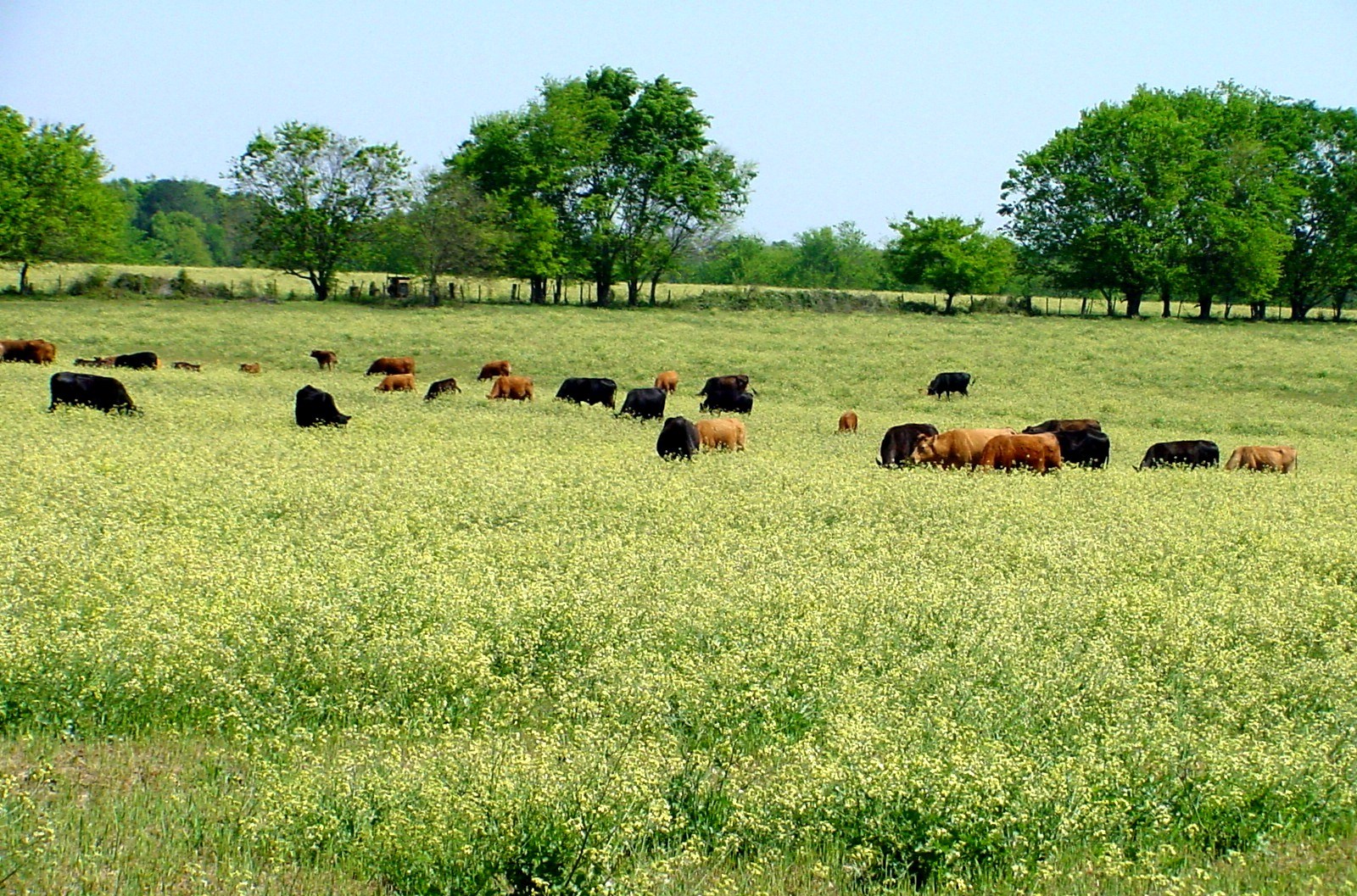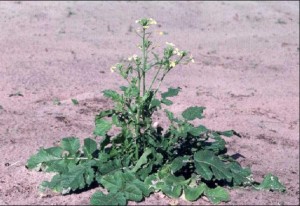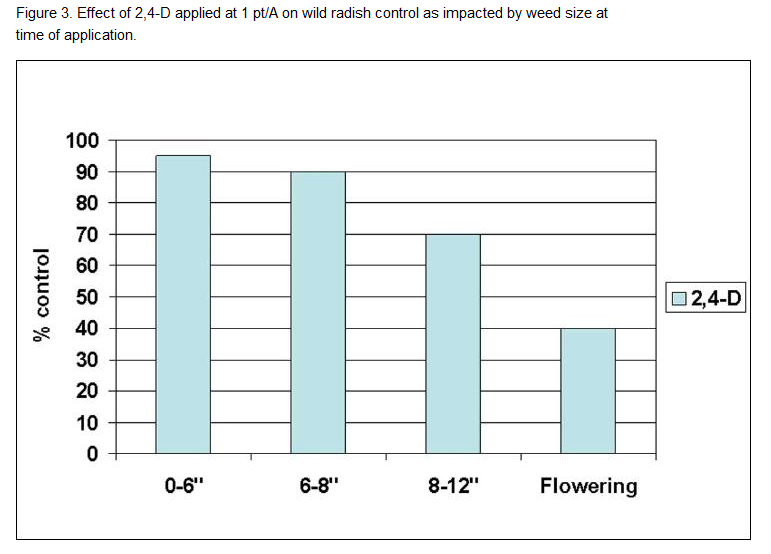
Wild radish, commonly referred to as wild mustard can become a serious weed problem in winter pastures. It is time to begin scouting fields so that herbicide applications can be made prior to flowering. Photo credit: Doug Mayo
Dr. Jay Ferrell, UF/IFAS Extension Weed Specialist &
Dr. Brent Sellers, UF/IFAS Extension Weed Specialist
Many cattle producers plant temporary grazing areas with ryegrass, wheat, oats, or other small grain varieties since summer pastures are now dormant. A successful winter pasture can be a highly productive and somewhat inexpensive way to improve animal performance during the winter months. However, many livestock producers do not consider weed management as part of the production strategy, and often have rampant infestations of wild radish (commonly called wild mustard), geranium, and other winter weeds.
Control of winter weeds is relatively inexpensive and easy if it is done in a timely manner. Wild radish seeds begin to germinate when soil temperatures reach 65 F. At the time of this writing, soil temperatures are already below this mark, meaning that wild radish is actively germinating right now. It is important to begin scouting the winter pasture areas to determine your level of winter weed infestation and plan your herbicide application timing.

Wild radish, known locally as wild mustard, is emerging now and can be effectively controlled is sprayed early in the season.
For wild radish control, the first step is to start clean. This means either a tillage operation or a good herbicide burndown. If using herbicides, realize that glyphosate is not effective on wild radish and other herbicides should be included to improve control. After the crop is planted, the key is to catch the radish when it is small. For small wild radish, 1 pint of 2,4-D will provide good control. By small, I mean the plants should be about the size of your hand. If you wait until the plants are large and flowering, control will usually range between 50 and 0%. Other herbicides such as Banvel and Weedmaster may be used, but these will also be ineffective on large weeds.
Timing the herbicide application relative to the winter pasture should also be considered. Applications made soon after emergence will cause significant leaf rolling and yellowing. Applications made too late can cause lodging and additional injury symptoms. Therefore, herbicides should be applied after the cool season crops have fully emerged and begun to tiller, but prior to head formation. Additionally, application rates of 2,4-D, Banvel, or Weedmaster should not exceed 1 pint per acre (pt/a). But if the weeds appropriately small, 1 pt/A will be more than enough herbicide to provide effective control. See Figure 3 below.
 Start scouting your winter pastures now to be ready for herbicide application. Properly timed, the herbicide will provide excellent weed control and dramatically improve forage yield. For more information on controlling wild radish (mustard), download the EDIS Fact Sheet: Wild Radish Biology and Control.
Start scouting your winter pastures now to be ready for herbicide application. Properly timed, the herbicide will provide excellent weed control and dramatically improve forage yield. For more information on controlling wild radish (mustard), download the EDIS Fact Sheet: Wild Radish Biology and Control.
- The How and Why of Preemergence Herbicide Incorporation for Row Crops - April 28, 2017
- Using Dicamba on Dicamba-Tolerant Crops - March 3, 2017
- Managing Dicamba Drift when using New Dicamba Resistant Cotton Varieties - January 27, 2017
